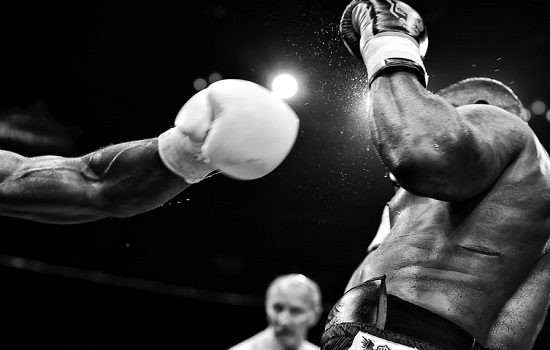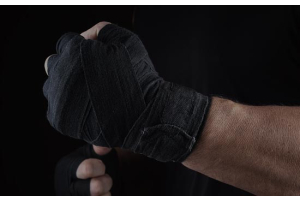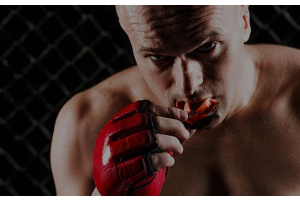Art of intimidation

Intimidation is an essential weapon in all types of games and sports, but is usually utilized in face-off sports like boxing. Boxing, although is a physical game but encompasses violent and one-on-one combat, where psychological factors such as self-confidence and intimidation hold a great hand in winning the fight. There is an old famous phrase ‘most combats are won before the first blow is thrown’. A sense of competition and determination of winning creates attributes of intimidation and strong will. In boxing, the fight between the opponents begins way earlier than their encounter in the ring. It starts when a fighter trains and practices hard throughout the weeks of training. It appears and prevails in fighter’s tactics when he examines his opponent and looks out for his vulnerabilities. The actual effect of it manifests when fighters are face-to-face in the ring. That is the exact moment when the intimidation plays its first part. To force the opponent in his defensive mode, when the fight begins, there are particular strategies one can adopt to gain an upper hand in the fight.
Tactic #1
Confidence: A key to intimidation
Many boxers utilize the power of intimidation to stand out against their opponents, but most of them are unable to have an intense influence as they lack real confidence or enthusiasm. Thus, most of the intimidating boxers who lack genuine confidence cannot physiologically transmit their intend on their opponent. Among all the famous intimidators, Mike Tyson was the most feared man in the history of boxing and athletics, exhibiting a tremendous level of hate and anger. Tyson was well known for imparting fear into his opponent before their encounter in the boxing ring. The level of fear in the opponent rises when the first face-to-face encounter occurs and is topped when the bell rings. Most of the battles he won long before entering the ring and before landing a single blow. Mike Tyson mastered eyeballing the opponent, giving him the goosebumps. Sonny Liston, another boxer of great intimidation capability, faced Tyson in the ring with fervor confidence. Tyson dictated the encounter with Liston and how they fought with every emotion before the bell rung. Both the competitors exhibited outrageous feelings towards each other. Their momentarily hatred and anger for each other was original, the impact of which persisted throughout their encounter in the field. Which keeps on harnessing them against each other. This is the scene spectators are thrilled to see.
Tactic #2
Pumping fear
The psychological fight of intimidation takes a physical form as soon as the bell rings. Therefore, setting the atmosphere to land the first blow is important. Even if you adopt a strategy to avoid the first blow, take an action to throw your first punch against the opponent and fall back into your stance outside the range of your opponent. It is significant to land the first blow, to indulge your opponent with fear of your fighting spirit and enthusiasm. The first onset blow gives a message that you are steadfast in the fight and bear no fear for your opponent. This would create your dominance in the ring. The opponent would perceive your message, and would mentally prepare for a long, fierce fight or would drench in your fear and decide to quit. He may also fight back and responds but in his defense.
Tactic #3
Landing successful jabs
Extraordinary strength only is not the key to win a fight. In boxing, a perfectly and timely landed jab scores even better. Landing continuous jabs would demotivate your opponent even if it does not hurt him significantly. Rapid hits would help in losing his muscular stance and unsettling his confidence. Even if your jabs do not damage him much, it would keep him preoccupied and will not allow him to work out on his move. Rather he would be busy blocking your moves and reduce his stamina in defense rather than in offense.
Tactic #4
Show strong emotions
During the fight, you may get hit by various punches or jabs by your opponent, make sure to keep your facial expressions strong and avoid the natural emotional responses. This tactic is easier said than done, as avoiding the feeling of pain or hurt is a difficult task. Do not squint or flinch in response to a punch. Avoid murmuring and groaning when you take a blow. Try to show that you are strengthened by your opponent’s punches reaching you. If you get a cut and bleed, do not clean it but ignore it. As if you do not care about it, and it is nothing to you. Be agile in your movements even though you get tired. Do not exhibit signs of fatigue or shortness of breath by gasping through the mouth. Try to make your body and emotions go against their natural way. This would discourage the opponent and they will switch to a defensive mode, letting the fight be in your favor.
Tactic #5
Landing the last punch
Before the end of each round, just before the last bell rings give your opponent a good blow. Reducing his fighting spirit and fervor. This technique was implemented by Sugar Ray Leonard against Marvin Hagler the ‘Marvellous’. In 1987, both encountered a super fight in the ring when Sugar landed the first and the last blow successfully. Representing the setting back of Marvin and indulging the attention of the crowd towards Leonard, turning the tables in his favor. As is said the first impression is the last impression, turning the final decision of the judges in Leonard’s favor.
Tactic #6
Maintain aggressiveness until the end
Building a strong stance before and at the end of the fight is important. Coincide your gloves to your opponent’s when the referee tells you to before the fight begins and before the last round. If not, then maintain a fighter’s stance, your chin titled, hands up in the front, you must be ready to launch the first blow. Show signs of anger and aggressiveness towards your opponent, do not develop friendly looks. Getting friendly with your opponent would lose your good sportsmanship. The purpose of the fight would die, the sense of remaining active and protecting yourself would end. Paying respect to your opponent is necessary, but getting friendly is not an option.
Practicing intimidation is necessary so that it can act as your secret weapon in combat. Most of the spectators would never know it if you exhibit it genuinely. Unleashing it to your opponent sets a dominating persona of you to him. Giving you an upper hand during the fight.
Keynote: intimidation is a strong weapon of intense psychological warfare in boxing. Genuine intimidation instills fear in the opponent and discourages him. It is like hypnotizing your opponent and indulging fear of yourself in him. Practicing intimidation and applying it on the battlefield is one of the great keys to success.





